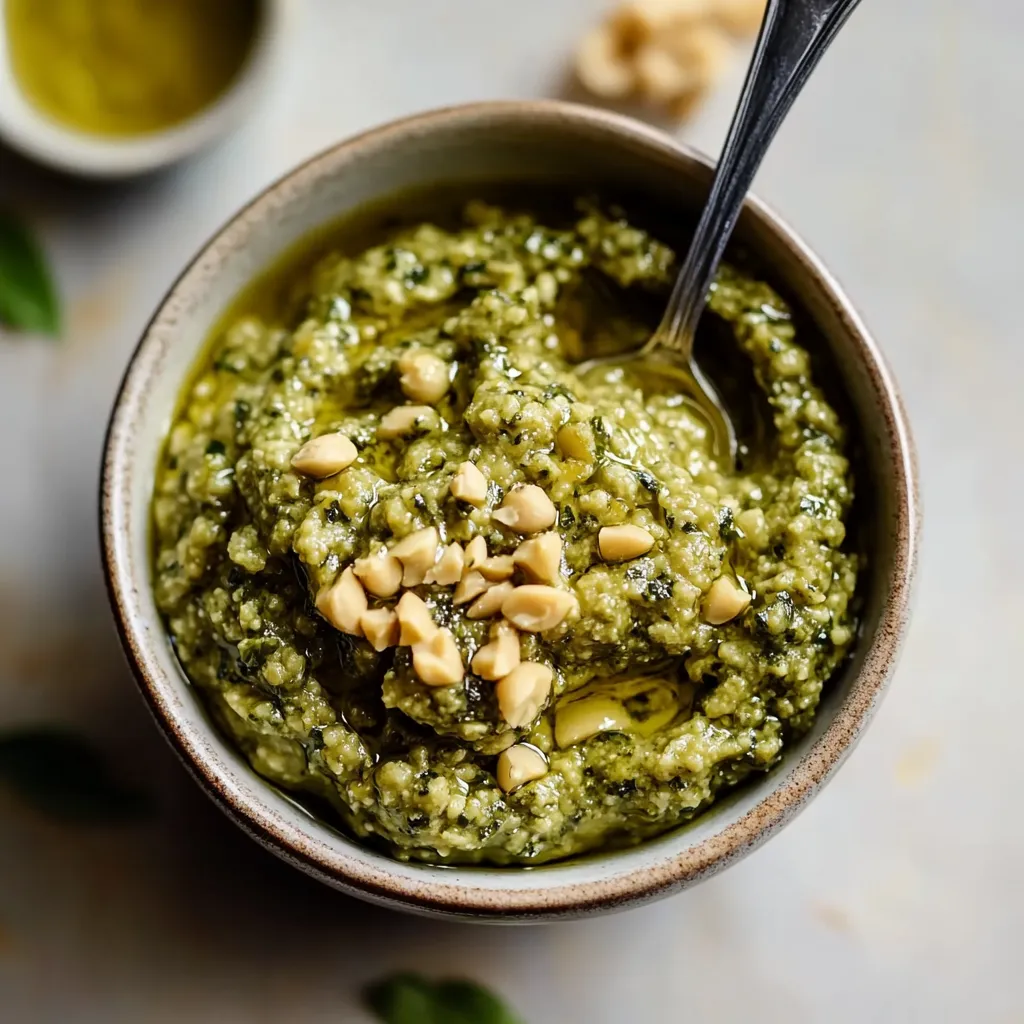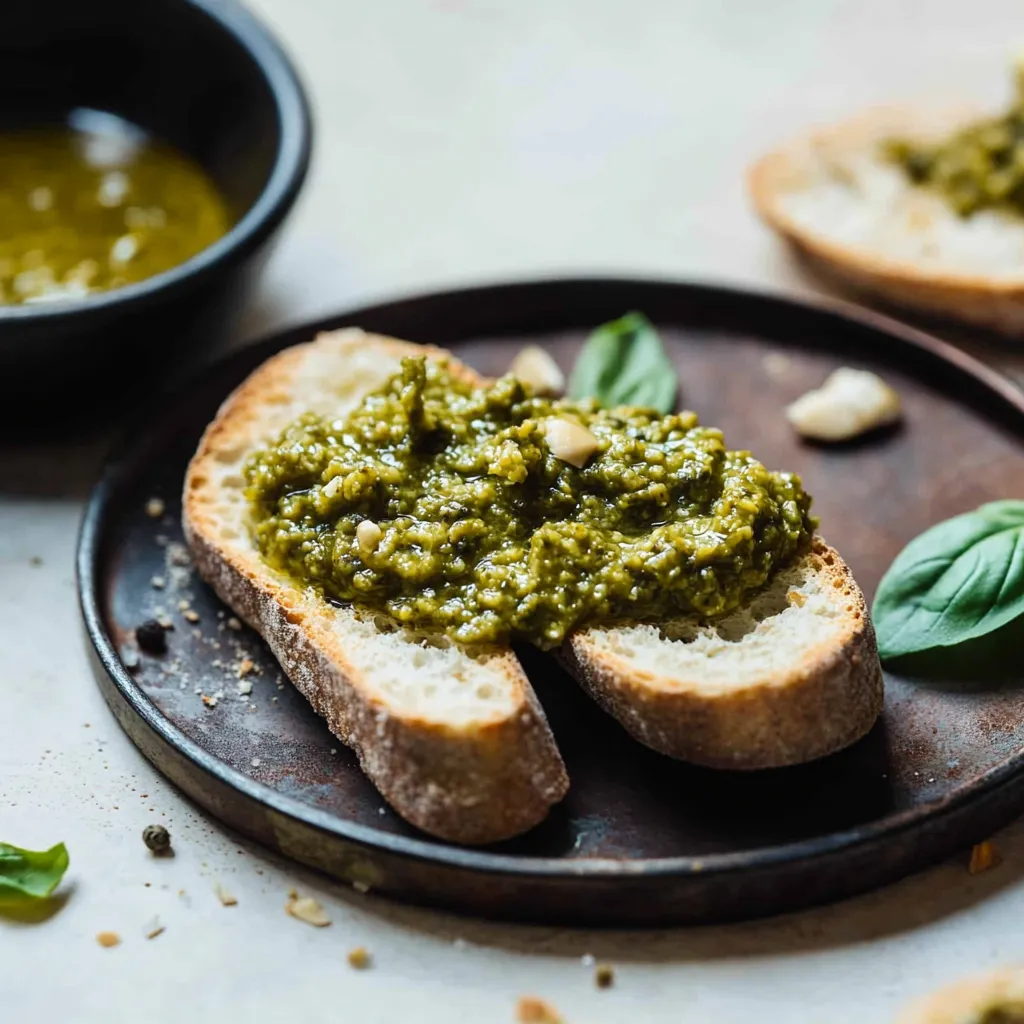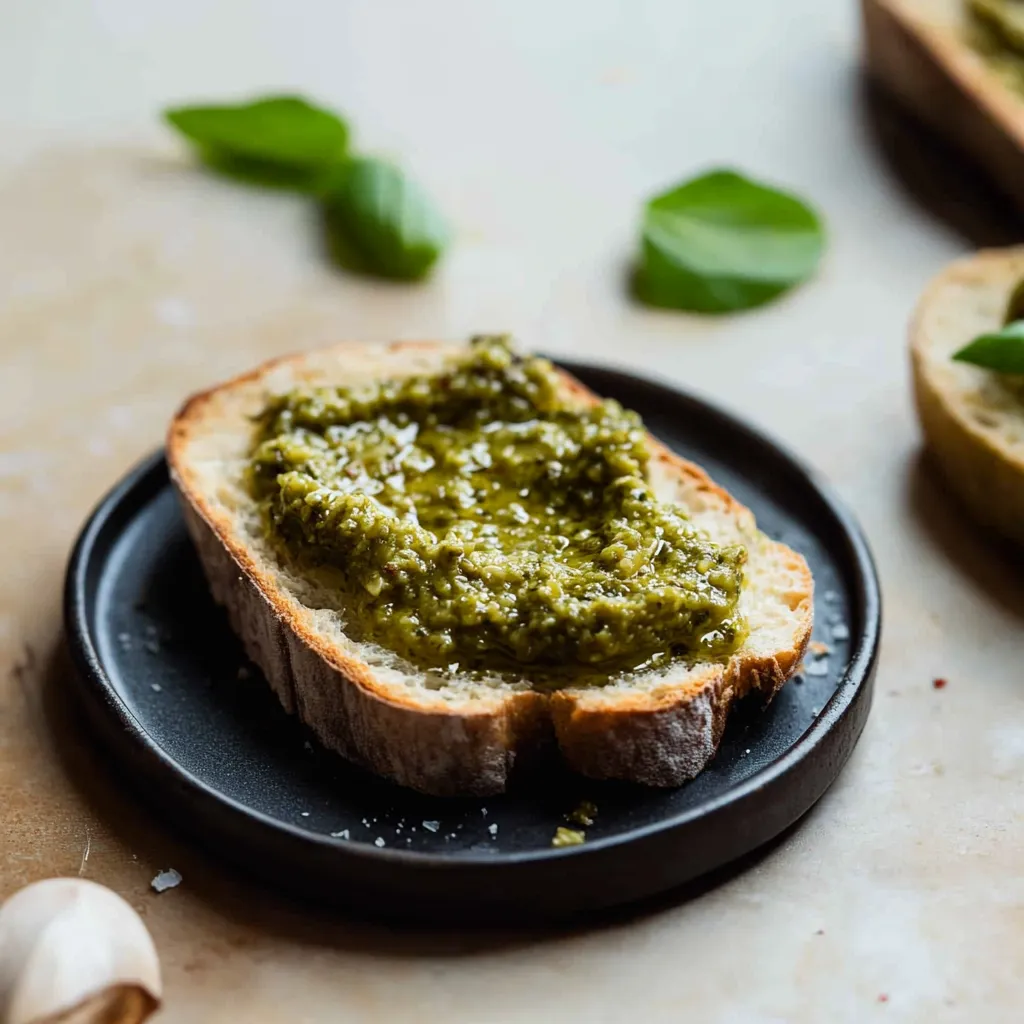 Pin it
Pin it
This bold green olive spread turns basic appetizers into fancy treats without breaking a sweat. It's my favorite dip for parties since it packs amazing Mediterranean taste while looking super classy on any spread.
I stumbled upon this spread during a trip along the Mediterranean shoreline. The small local shops sold versions that made store-bought stuff look sad. After years of tweaking, this has become my signature starter when friends come over.
Ingredients
- Green olives: I go for smooth Castelvetrano ones for their gentle sweetness and gorgeous green hue
- Anchovy fillets: They add rich depth without tasting fishy; grab the ones packed in oil
- Pine nuts: Their soft crunch brings fancy texture and nutty flavor
- Fresh herbs: Basil and parsley add zip and color you can't get from the bottled stuff
- Capers: These tiny flavor bombs give that essential tangy kick; salt-packed ones work best
- Garlic: Just a single clove works with everything else without taking over
- Lemon zest: Brings needed freshness to balance the richness
- Extra virgin olive oil: Don't cheap out here; good oil really makes it special
Step-by-Step Instructions
- Mix your foundation:
- Throw olives, anchovies, pine nuts, fresh herbs, capers, garlic, and lemon zest into your food processor. Give it about 8-10 quick pulses until roughly chopped. The trick is keeping some chunks rather than making it completely smooth right away.
- Add your olive oil:
- Pour the olive oil in slowly while giving a few more pulses. This creates that perfect blend that gives the spread its ideal texture. You want it easy to spread but still showing bits of olives and herbs. Keep processing until you get it how you like it – chunkier or smoother.
- Check the flavor:
- This final part makes sure your spread tastes amazing. Add kosher salt bit by bit, tasting as you go. Keep in mind that olives, capers and anchovies are already salty. You're just trying to bring out flavors without going overboard. A tiny bit of lemon juice can perk it up if needed.
- Serve it up:
- Scoop it into a nice bowl and let it sit for 15 minutes before serving so the flavors can mix. Top with a drizzle of your fanciest olive oil, scatter a few extra pine nuts and tiny basil leaves to make it look good. It should have a lovely deep green color dotted with herbs.
 Pin it
Pin it
The anchovies are truly the hidden hero here. Most folks aren't sure about adding them, but they totally melt away and give that mystery flavor that makes everyone ask what's in it. When I have veggie friends over, I swap in a teaspoon of white miso paste instead of anchovies and they love it just as much.
Prep It Early
This spread actually gets better with time, making party prep a breeze. You can make it up to three days ahead and keep it in a sealed container in the fridge. The olive oil will harden when cold, so pull it out at least 30 minutes before serving. Give it a quick mix to blend any separated oil. The flavors get cozier during this resting time, creating an even tastier result.
More Than Just A Dip
While eating this spread on crusty bread is the classic way, this handy mix works great for lots of things. Drop some over grilled fish for a quick sauce, mix a spoonful into your salad dressing for amazing salads, or toss it with pasta dishes. My favorite trick is spreading it on grilled veggies while they're still hot, letting the heat wake up all those great smells. It can turn plain roasted potatoes into restaurant-quality sides with zero extra work.
From The Med
This spread comes from Provence in southern France, where olive trees have grown forever. The traditional kind uses black olives and capers, and the name comes from the Provençal word for capers, "tapenas". My green version puts a fresh spin on it while keeping true to its roots. Around the Mediterranean, you might find versions with oregano or thyme, but they all celebrate one thing: the amazing olive.
 Pin it
Pin it
Put this spread front and center at your next get-together and watch your friends go wild!
Frequently Asked Questions
- → What kind of olives work best for olive spread?
Go for Castelvetrano, Cerignola, or Manzanilla olives. They have a rich, buttery texture and mild taste that balances the salty tang. Castelvetrano stands out for its vibrant color and firm texture.
- → Can I skip the anchovies in this recipe?
Of course! If you'd rather leave out the anchovies, add a pinch more salt and a splash of olive brine or miso paste to bring out the same savory depth.
- → How long can I keep homemade olive tapenade?
Store it in the fridge in a sealed container, and it should stay good for about one week. If it hardens from the olive oil solidifying, let it sit out for half an hour before serving.
- → What goes well with olive spread?
Enjoy with bread, crackers, fresh veggies, or as part of a Mediterranean-style platter. It also makes a nice addition to sandwiches, pasta, or as a topping on grilled chicken or seafood.
- → Can olive spread be frozen?
Yes! It freezes just fine and keeps for up to three months. Freeze smaller portions in sealed containers or ice cube trays, then pop out what you need and thaw overnight in the fridge.
- → What can I use instead of pine nuts?
Try swapping pine nuts for toasted walnuts, almonds, or pistachios. Each brings its own unique taste, and pistachios add a lovely pop of green color.
